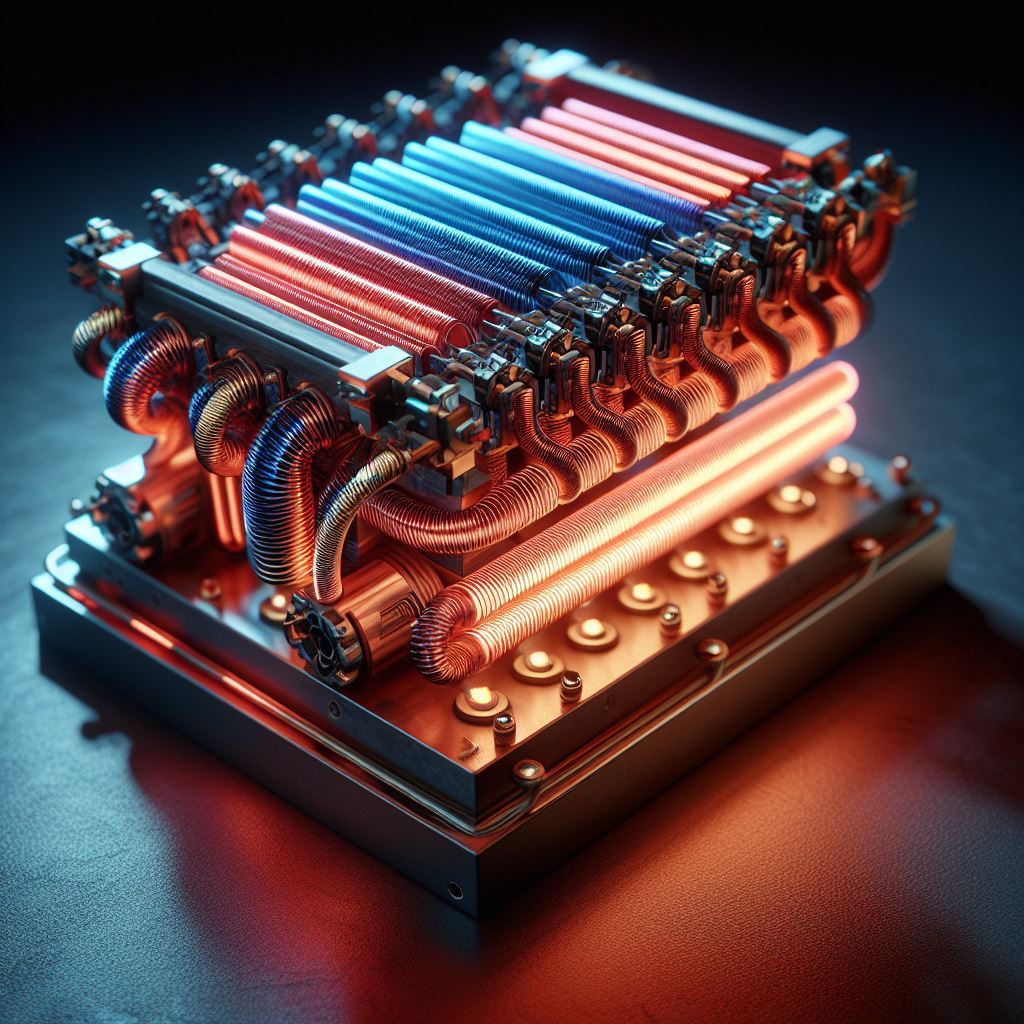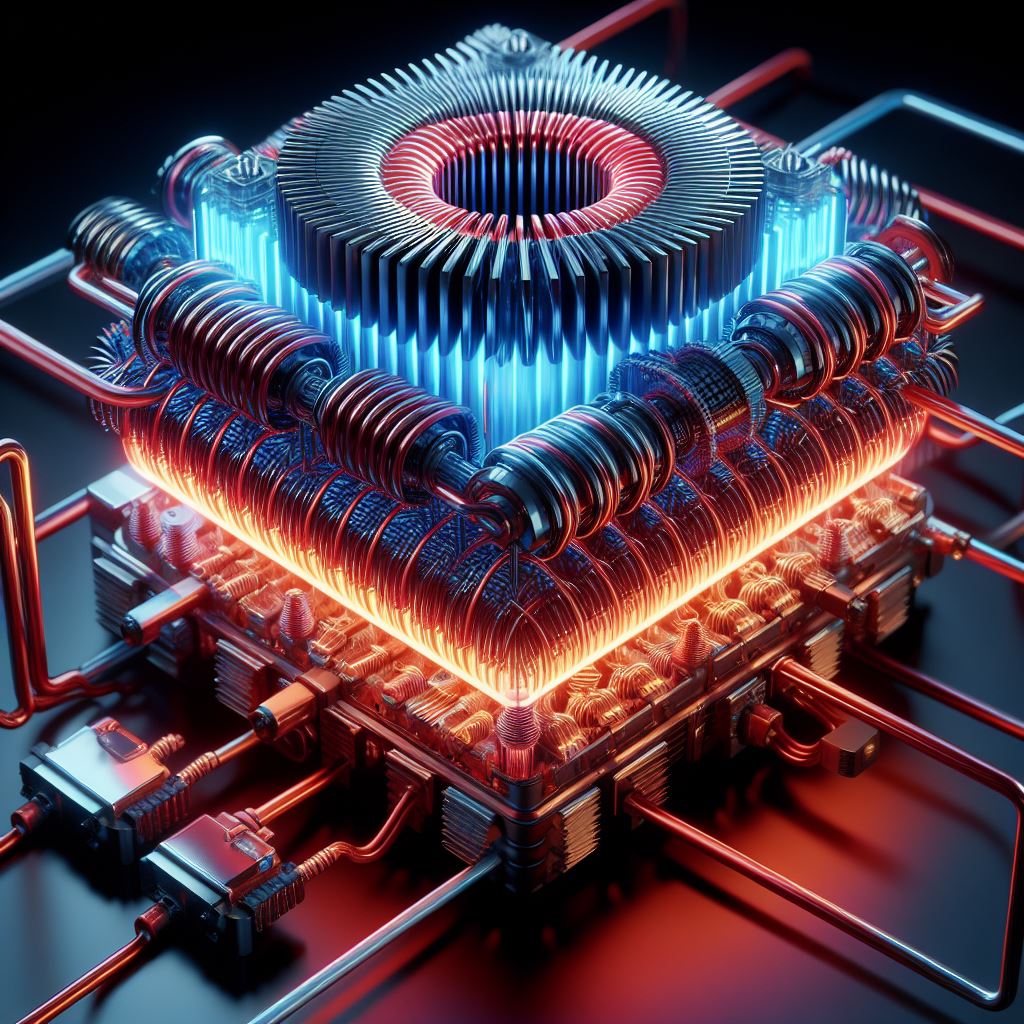
Thermoelectric generators (TEGs) have emerged as promising players, particularly in the domain of waste heat recovery. Imagine turning the heat produced by your car’s exhaust or your industrial processes into a valuable source of electricity – that’s the magic of thermoelectric generators.
Understanding the Basics
The roots of thermoelectricity trace back to the early 19th century when Estonian-German physicist Thomas Johann Seebeck stumbled upon what we now know as the Seebeck effect. His curiosity led him to the discovery that when two different metals were connected in a closed loop and exposed to a temperature gradient, an electric current would flow. This groundbreaking observation laid the foundation for the birth of thermoelectricity, ultimately giving rise to the development of thermoelectric generators.
The core principle behind TEGs hinges on the Seebeck effect, an inherent phenomenon within certain materials. These materials, known as thermoelectric materials, exhibit a unique property – the conversion of a temperature gradient into an electric voltage. In simple terms, TEGs harness the energy created by the temperature disparity between the hot and cold sides of a material, initiating the flow of electric current.
The early applications were modest, finding use primarily in niche areas. However, the increasing global focus on clean and renewable energy has propelled TEGs into the spotlight, prompting researchers and scientists to explore new frontiers and elevate their capabilities.
In the contemporary era, TEGs have transcended their initial limitations, thanks to the advent of high-performance thermoelectric materials. Traditional materials, which posed efficiency challenges, have given way to advanced alloys and composites, such as bismuth telluride and skutterudites. These materials represent a paradigm shift, enhancing the efficiency of TEGs and broadening their applications in waste heat recovery.
Researchers have taken innovation a step further by venturing into the nanoscale. Nanostructured thermoelectric materials have emerged as a game-changer, offering properties that significantly amplify thermoelectric performance. By manipulating materials at this minuscule scale, scientists are unlocking unprecedented possibilities for waste heat recovery systems, paving the way for more compact and powerful TEGs.
In addition to enhanced materials, the versatility of TEGs has been a focus of recent developments. The concept of flexible thermoelectric generators has taken center stage, allowing for applications in unconventional settings.
The integration of TEGs with the Internet of Things (IoT) and smart systems marks yet another milestone. TEGs are no longer static energy converters; they’ve become intelligent systems that communicate with other devices, adjusting their performance based on real-time data.
In the automotive industry, TEGs are revolutionizing waste heat recovery. Integrated into the exhaust systems of vehicles, they convert heat from engine exhaust into electricity, simultaneously reducing fuel consumption and emissions. This innovation is a testament to the versatility and practicality of TEGs, addressing both environmental concerns and fuel efficiency in the transportation sector.
Advancement №1: High-Performance Materials
An advancement that has revolutionized their efficiency is the evolution of high-performance thermoelectric materials. Traditionally, TEGs faced limitations due to the constraints of available materials. However, recent breakthroughs have propelled the field forward by introducing advanced alloys and composites.
These cutting-edge materials, such as bismuth telluride and skutterudites, have garnered significant attention for their remarkable ability to enhance the conversion of heat differentials into electrical power. Unlike their predecessors, these materials exhibit superior thermoelectric properties, ensuring a more effective and sustainable utilization of waste heat. This breakthrough not only signifies a quantum leap in efficiency but also opens doors to a broader range of applications, positioning TEGs as a frontrunner in the quest for sustainable energy solutions.
Advancement №2: Nanostructured Thermoelectric Materials
A world where materials are shrunk down to the nanoscale – that’s the intriguing the second groundbreaking advancement in thermoelectric generators (TEGs). Researchers are delving into the intricacies of nanostructured thermoelectric materials, a venture that promises to revolutionize the efficiency of TEGs.
Nanostructured materials boast unique properties that markedly enhance their thermoelectric performance. This advancement it’s a journey into the world of unprecedented possibilities for waste heat recovery systems. By manipulating materials at the nanoscale, scientists are uncovering innovative ways to make TEGs more compact and powerful.
This shift towards nanostructured thermoelectric materials represents a paradigm shift in TEG technology, signifying a move towards enhanced performance and scalability.
Advancement №3: Flexible TEGs for Versatility
In the pursuit of pushing boundaries, the third remarkable advancement in thermoelectric generators (TEGs) transcends mere efficiency—it’s about versatility. Researchers are channeling their efforts into crafting flexible TEGs, ushering in a new era where adaptability to diverse environments takes center stage.
These flexible thermoelectric generators are not confined by traditional limitations; instead, they open doors to applications in unconventional settings. Picture a future where TEGs seamlessly integrate into clothing, harnessing the body’s natural heat for power, or envision them embedded in irregularly shaped surfaces, capturing energy in places previously deemed inaccessible.
Advancement №4: Integration with IoT and Smart Systems
Amidst the era of interconnected devices, the fourth stride forward in thermoelectric generators (TEGs) lies in their evolution towards heightened intelligence. The integration with the Internet of Things (IoT) and smart systems marks a substantial leap in TEG technology.
This advancement enables TEGs to establish seamless communication with other devices, allowing them to adjust their performance dynamically based on real-time data. The implications are profound — TEGs are no longer static entities but adaptive powerhouses, optimizing energy production in response to changing conditions.
Advancement №5: Application in Automotive Industry
Revolutionizing the automotive landscape, the fifth noteworthy advancement in thermoelectric generators (TEGs) unfolds as a pioneering integration within the automotive industry. TEGs are taking center stage by seamlessly incorporating into the exhaust systems of vehicles, showcasing their potential for waste heat recovery on the go.
The brilliance of this innovation lies in TEGs’ ability to convert the heat generated by engine exhaust into a tangible source of electricity. The implications are substantial – a dual-purpose system that not only enhances fuel efficiency but also contributes significantly to the reduction of emissions. It’s a win-win scenario, addressing both environmental concerns and the imperative need for heightened fuel efficiency in the ever-evolving transportation sector.

